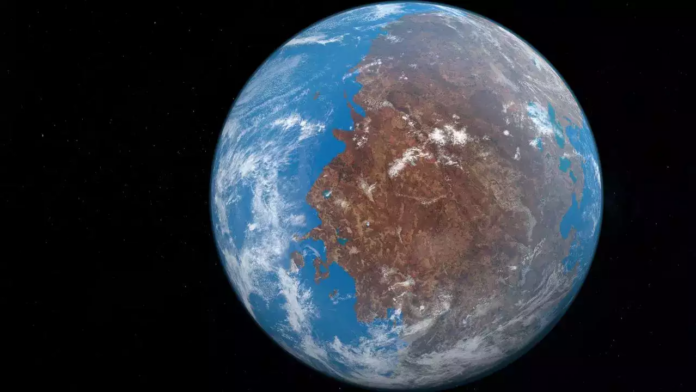Earth’s Future Under Supercontinent Pangea Ultima
In a groundbreaking study published in Nature Geoscience, scientists have revealed the grim future of humanity and mammals on Earth. The research, led by Dr. Alexander Farnsworth, a Senior Research Associate at the University of Bristol, predicts that the formation of a supercontinent called Pangea Ultima will result in extreme climate changes, eventually leading to the extinction of humans and other mammals.
The study warns that this transformation, which is expected to occur over the next 200 to 300 million years, will render the planet uninhabitable for life as we know it.
The Formation Of Pangea Ultima
The Earth’s continents are slowly drifting toward one another and will eventually merge to form a supercontinent. This geological phenomenon, referred to as Pangea Ultima, is projected to drastically alter the planet’s climate. The convergence of landmasses will disrupt ocean currents and reduce moisture levels, leading to widespread arid conditions and extreme temperatures.
Dr. Farnsworth’s research indicates that the temperatures in Pangea Ultima could range between 40°C to 50°C (104°F to 122°F), exceeding the thermal limits of human survival. The study also highlights the role of volcanic activity in releasing greenhouse gases, which will further intensify global warming.
Implications For Human And Mammal Survival
The predicted environmental changes will have catastrophic effects on humans and other mammals, whose ability to regulate body temperature will be overwhelmed. Prolonged exposure to extreme heat and humidity will lead to fatal heat stress, making survival impossible.
The study emphasizes that mammals, including humans, rely on evaporative cooling mechanisms such as sweating. However, in conditions of high heat and humidity, these mechanisms fail, leading to life-threatening consequences.
Climate Models Reveal Dire Outcomes
Using advanced supercomputer climate models, researchers simulated the climatic conditions of Pangea Ultima. The models identified three key factors contributing to the harsh environment:
- Increased Solar Output: Over millions of years, the Sun’s energy output is expected to rise, further warming the planet.
- Continentality Effect: As landmasses merge, vast regions will be located far from oceans, leading to greater temperature fluctuations and reduced rainfall.
- Elevated Carbon Dioxide Levels: Enhanced volcanic activity during the formation of the supercontinent will release significant amounts of CO₂, exacerbating the greenhouse effect.
Lessons For The Present
While the formation of Pangea Ultima is a long-term event, the study serves as a reminder of the current environmental challenges facing humanity. Rising carbon dioxide levels and global warming are already impacting ecosystems and biodiversity.
Dr. Farnsworth and his team highlight the urgent need for immediate action to mitigate anthropogenic climate change. They stress that reducing greenhouse gas emissions and transitioning to sustainable energy sources are critical to preserving the planet’s habitability for future generations.
A Glimpse Into Earth’s Geological Future
The concept of supercontinents is not new; Earth has experienced similar formations in its geological past. Pangea Ultima is expected to be the fifth supercontinent, following previous formations such as Rodinia and Gondwana.
However, the unique challenges posed by Pangea Ultima, including extreme heat and arid conditions, make it distinct from its predecessors. Scientists believe that understanding these challenges can provide valuable insights into the long-term evolution of Earth’s climate and geography.
Hope Amidst The Predictions
While the study paints a grim picture of Earth’s future, it also underscores the resilience of life on the planet. Throughout Earth’s history, life has survived mass extinctions and adapted to changing conditions. Researchers remain hopeful that advancements in science and technology will enable humanity to overcome future challenges.
For now, the findings of this study serve as a wake-up call to address the pressing issue of climate change and work toward a sustainable future. As Dr. Farnsworth puts it, “The choices we make today will shape the world for millions of years to come.”

